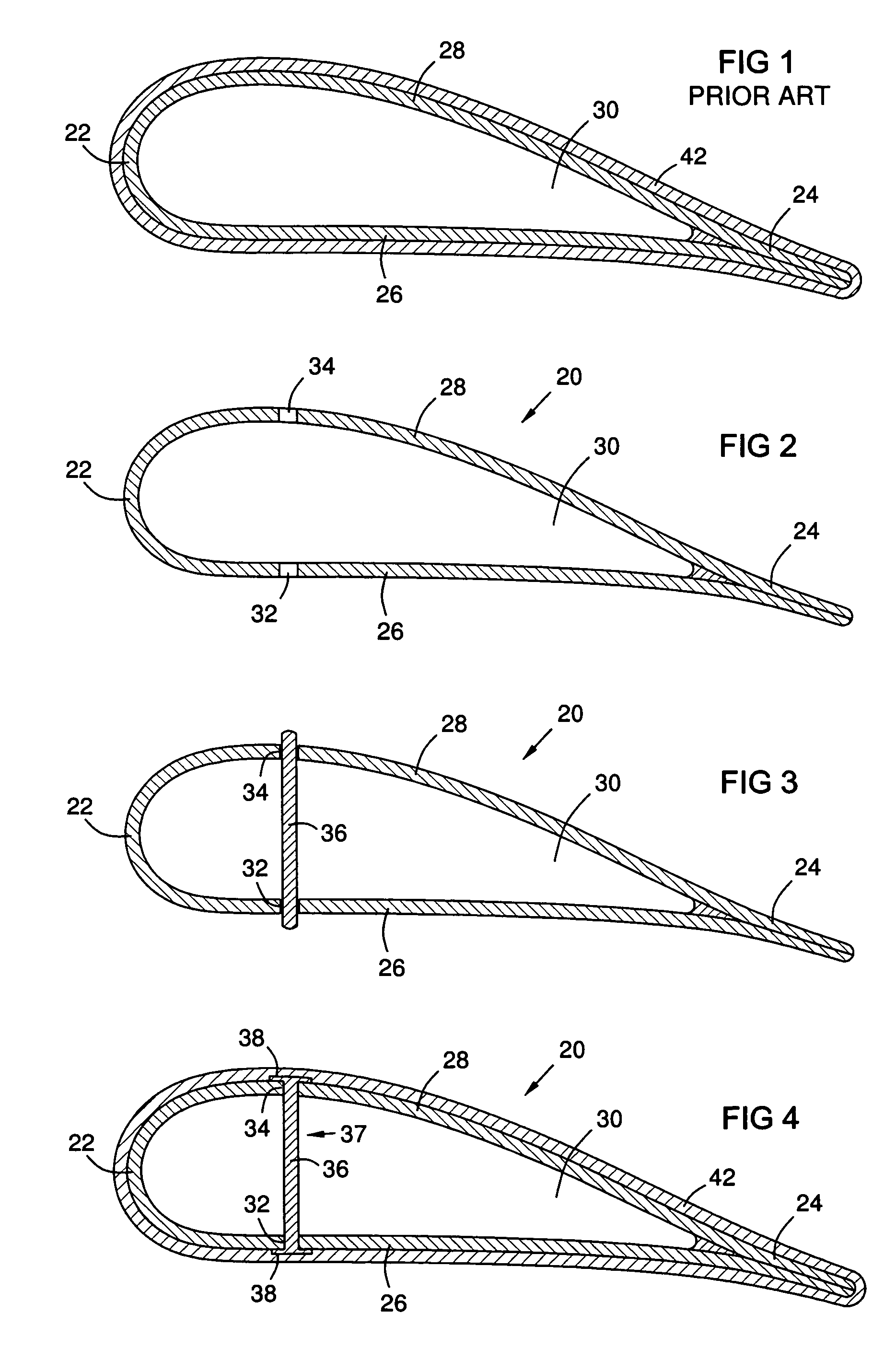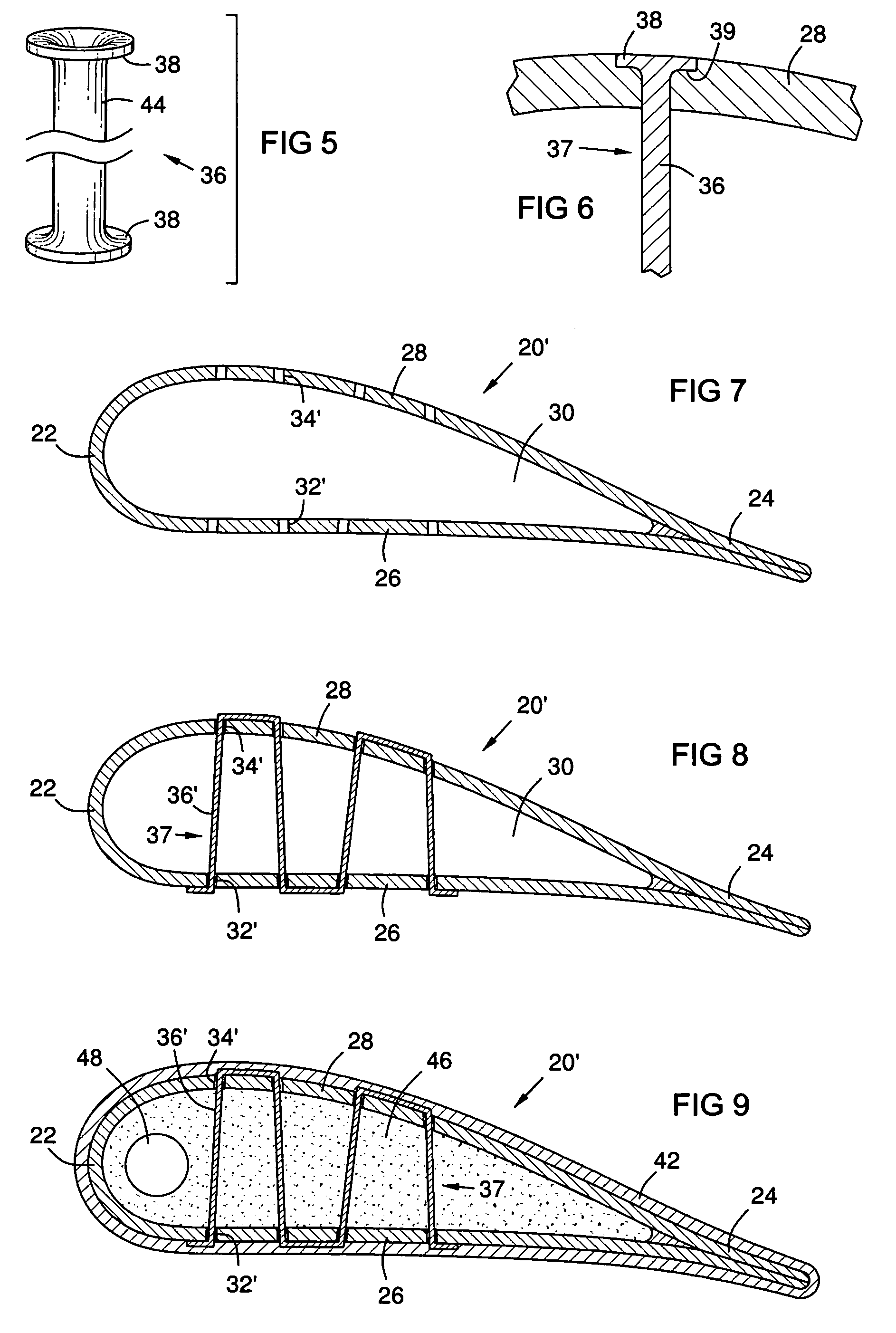Hollow CMC airfoil with internal stitch
a technology of hollow cores and airfoils, which is applied in the direction of liquid fuel engines, marine propulsion, vessel construction, etc., can solve the problems of high stress for a given inner/outer pressure differential, insatiable cmc airfoils, and particularly susceptible to wall bending loads
- Summary
- Abstract
- Description
- Claims
- Application Information
AI Technical Summary
Problems solved by technology
Method used
Image
Examples
Embodiment Construction
[0016]FIG. 1 shows a sectional view of a prior art hollow CMC airfoil formed with walls made of a ceramic fabric infused with a ceramic matrix. The airfoil has a leading edge 22, a trailing edge 24, a pressure wall 26, a suction wall 28, and an interior space 30. It may also have an insulative outer layer 42. High-temperature insulation for ceramic matrix composites has been described in U.S. Pat. No. 6,197,424, incorporated by reference herein, which issued on Mar. 6, 2001, and is commonly assigned with the present invention.
[0017]FIG. 2 shows a CMC airfoil 20 with holes 32 and 34 formed in the pressure and suction walls 26, 28. The holes 32, 34 may be formed by any known technique, for example laser drilling, after drying or partially to fully curing the CMC walls 26, 28. FIG. 3 shows a bundle of ceramic fibers 36 passing through the holes 32 and 34. FIG. 4 shows the bundle of ceramic fibers 36 flared 38 at both ends against outer surfaces of the walls 26, 28. The bundle of cerami...
PUM
| Property | Measurement | Unit |
|---|---|---|
| pressure | aaaaa | aaaaa |
| shrinkage | aaaaa | aaaaa |
| aspect ratio | aaaaa | aaaaa |
Abstract
Description
Claims
Application Information
 Login to View More
Login to View More - R&D
- Intellectual Property
- Life Sciences
- Materials
- Tech Scout
- Unparalleled Data Quality
- Higher Quality Content
- 60% Fewer Hallucinations
Browse by: Latest US Patents, China's latest patents, Technical Efficacy Thesaurus, Application Domain, Technology Topic, Popular Technical Reports.
© 2025 PatSnap. All rights reserved.Legal|Privacy policy|Modern Slavery Act Transparency Statement|Sitemap|About US| Contact US: help@patsnap.com



